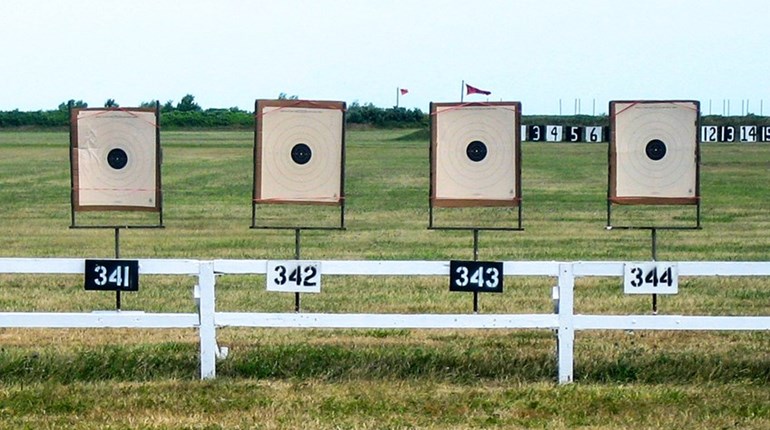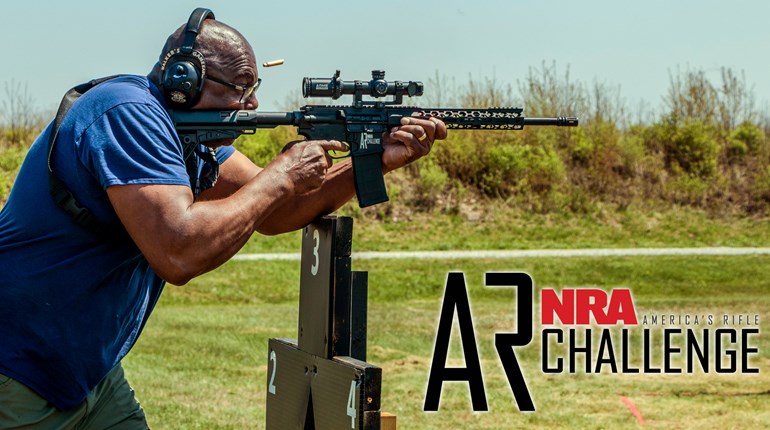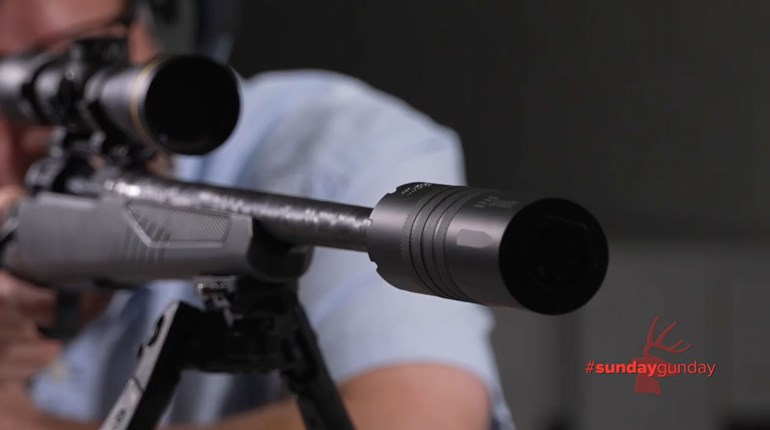
As target arms are required to consistently perform at a higher level of accuracy and reliability than other firearms, this requires additional refinement to the stock. Target rifle stock designs vary widely according to the demands of the individual shooter and his or her discipline. Today, solid-wood stocks have yielded to laminated-wood, hybrid or synthetic stocks because of their greater stability and more consistent accuracy in varying conditions over longer periods of time. Bedding is commonly in the form of fiberglass/epoxy compounds, steel or aluminum backbones or aluminum bedding blocks.
Design variations on target stocks can include fore-end accessory rails and counter weights as well as adjustable buttplates and combs. Benchrest rifle stocks have wide, flat fore-ends to ride sandbag rests solidly, as well as high combs to position the shooter's eye properly for viewing through a scope. Stocks for metallic silhouette competition have high combs, a short length of pull and a short, lowered fore-end that are more conducive to accurate shooting from a standing position. Long-range prone rifle stocks usually have high, straight combs, a long length of pull and a nearly vertical pistol grip. Perhaps the most adjustable gunstocks are those found on free rifles that offer adjustments for length of pull, pitch, vertical and lateral buttplate position, vertical buttplate angle and hand position on the fore-end. Also common on such rifles are palm rests and hook buttplates that help stabilize the gun in the standing position.
Stocks for trap, skeet and sporting clays shotguns commonly offer some or all of the following features: beavertail forearms; pistol grips (with or without palm swells); adjustable combs; and adjustable pitch and variable length of pull. On the other hand, competitors involved in shotgun slug and "turkey shoot" matches are mostly concerned with getting their sighting eye high enough to see through a low-powered optical or red-dot scope commonly used in such matches. For this reason, wood or synthetic stocks with high Monte Carlo combs are often favored for such guns.
Pistols used in centerfire and .45-caliber phases of three-gun bullseye competitions are often fired with their factory stocks. By contrast, many .22-caliber rimfire handguns used in bullseye competition are equipped with stocks having thumb rests, finger grooves and oversized dimensions for shooter comfort. For ISSF (International Shooting Sport Federation) competition, orthopedic stocks fitted specifically to the shooter's hand are used in order to provide maximum support. Practical handgun competitors (especially those using fat-bodied pistols for high-capacity magazines or those with small hands) sometimes utilize extra-thin stocks. Maintaining a secure, consistent grip under recoil is of utmost importance, so sharply checkered wood or synthetic grips of the wrap-around type are popular.







































